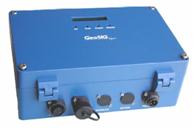|
|
Signal Processing and Analysis Tools for Civil Engineers |
File SystemThe following file types are supported for storing time histories: Other file types are also support in the software for different purposes: 1. LNEC's Test File Format - ltfThis is the recommended file type to store time histories because it can take advantage of most software features. This file format supports time histories with different trigger time, time step and number of samples. Read and save operations are supported. The data stored is the following:
Header - 4 string fields (Name, Series, Date, Observations)
For each time history / channel:
Note: The data of each channel can be presented in raw units or in EGUs has indicated in the "Data Format" field.
2. LNEC's Binary File Format - binThis file format was intensively used in LNEC's seismic tests and is fully supported. It does not support time histories with different trigger time, time step and number of samples. Read and save operations are supported. The data stored is the following:
Note: The data of each channel is always transformed and presented in EGU. The data is stored in 16 bits where 32768 represents +10V and -32767 represents -10V, so changing the scale factor and offset to 1 and 0, respectively, the raw units are retrieved.
3. ASCII column ordered text files - txtAny ASCII file with the time-histories ordered in columns. Read and save operations are supported.
4. GEOSIG's Seismic Recorders files - GSR
5. LNEC's Function File - lffThis is a binary file used to store functions. These file type can only be read/save in the Functions Manager Module; Read and save operations are supported. The data stored is the following:
For each function:
Note: Because the number of points in the functions are usually small (less than 100), there's no need to save them using a reduced precision format.
6. Math Channels Data Structure File - mcThis is a binary file used to store the data structure (levels and operations) to calculate math channels in the Math Channels Module; The data stored is the following. For each Level:
7. MDOF Model File - mmThis is a binary file used to store the data of MDOF models in the MDOF Model Module; The data stored is the following:
8. Visualization Data File - visThis is a binary file used to store the settings of 2D visualizations in the 2D Visualization Module; The data stored is the following:
9. Channels Configuration File - ccThis is a binary file used to store the channels configuration for acquisitions and outputs; The data stored is the following:
|
| Last updated: 15-08-2006 19:16 |
